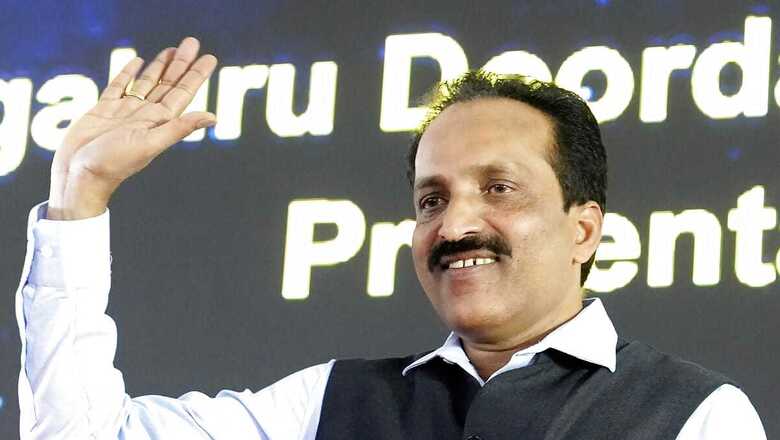
views
With Chandrayaan-3 mission completed, the Indian Space Research Organisation (ISRO) is now gearing up for India’s maiden human spaceflight. The first of the unmanned missions under Gaganyaan would be launched early next year, said agency chief S Somanath.
“Gaganyaan work is progressing very well. We will launch the first Test Vehicle flight (TV-D1) of the Gaganyaan crew module to demonstrate the abort capability. It will be carried out very soon, most likely in October. Everything is getting ready for it. We will repeat it again, and by early next year we are planning the first unmanned mission," said the ISRO chairman.
GAGANYAAN: FIRST TEST VEHICLE FLIGHT (TV-D1) THIS OCTOBER
The national space agency has planned as many as four test vehicle missions, TV-D1 and D2 in 2023, and D3 as well as D4 for 2024 to test technologies critical for the success of Gaganyaan. In addition, it has scheduled two un-crewed missions with robotic payloads – LVM3 G1 and LVM3 G2 — to demonstrate the human safety of the missions before it readies for the final flight.
The test flight this October will validate the crew escape system by demonstrating the abort capability. All the sub-systems pertaining to the test flight have been realized.
India plans to send three astronauts into the Low Earth Orbit (LEO) aboard its heaviest launcher LVM Mk3. The mission will consist of a crew module which will act as living quarters for the astronauts. The target is to position the module ~400 km circular orbit around earth for 1 to 3 days and bring it safely back to Earth. It will be India’s first-ever attempt at a human spaceflight programme. The training of astronauts selected for the ambitious space mission is also nearing completion.
ADITYA L-1 ON TRACK, 90 MORE DAYS TO GO
Aditya L1 – India’s first-ever solar mission — is also on track. The mission aimed at studying the Sun for next five years was launched on September 2 using PSLV, and is expected to reach its designated point by late January.
“It still has to travel another 90 plus days to reach the L1 point and then we will capture it in the Lagrangian halo orbit where it will remain. We have already started testing out instruments on it and we hope that all of them will start working once it reaches the L1 point so we get continuous observations of the Sun," he said on the sidelines of CSIR’s Foundation Day event in New Delhi.
Delivering the CSIR Foundation Day Lecture, the ISRO chairman also talked about how 95% of the space-grade materials, systems and devices for ISRO rockets are now being sourced from India. “Only 5% comes from outside. Even those are mainly high-end electronic components. The electronics including the processor that we fly in our rockets, the main computer, the chip is made in India. It is not a supercomputer, but it is enough to run a rocket safely in space," he said.
Meanwhile, ISRO has not yet shared any update on its efforts to establish communication with Chandrayaan-3. The space agency had created history with the successful touchdown of Chandrayaan-3 on the south pole of the moon on August 23. Both the Lander and Rover had successfully completed their mission life of 14 Earth Days and were put into sleep mode on September 4 when the night descended on moon.
A month later, when the lunar day began on September 23, the agency again made efforts to establish communication with it, but could not get any signals. “Efforts have been made to establish communication with the Vikram lander and Pragyan rover to ascertain their wake-up condition. As of now, no signals have been received from them. Efforts to establish contact will continue," ISRO had last stated.



















Comments
0 comment